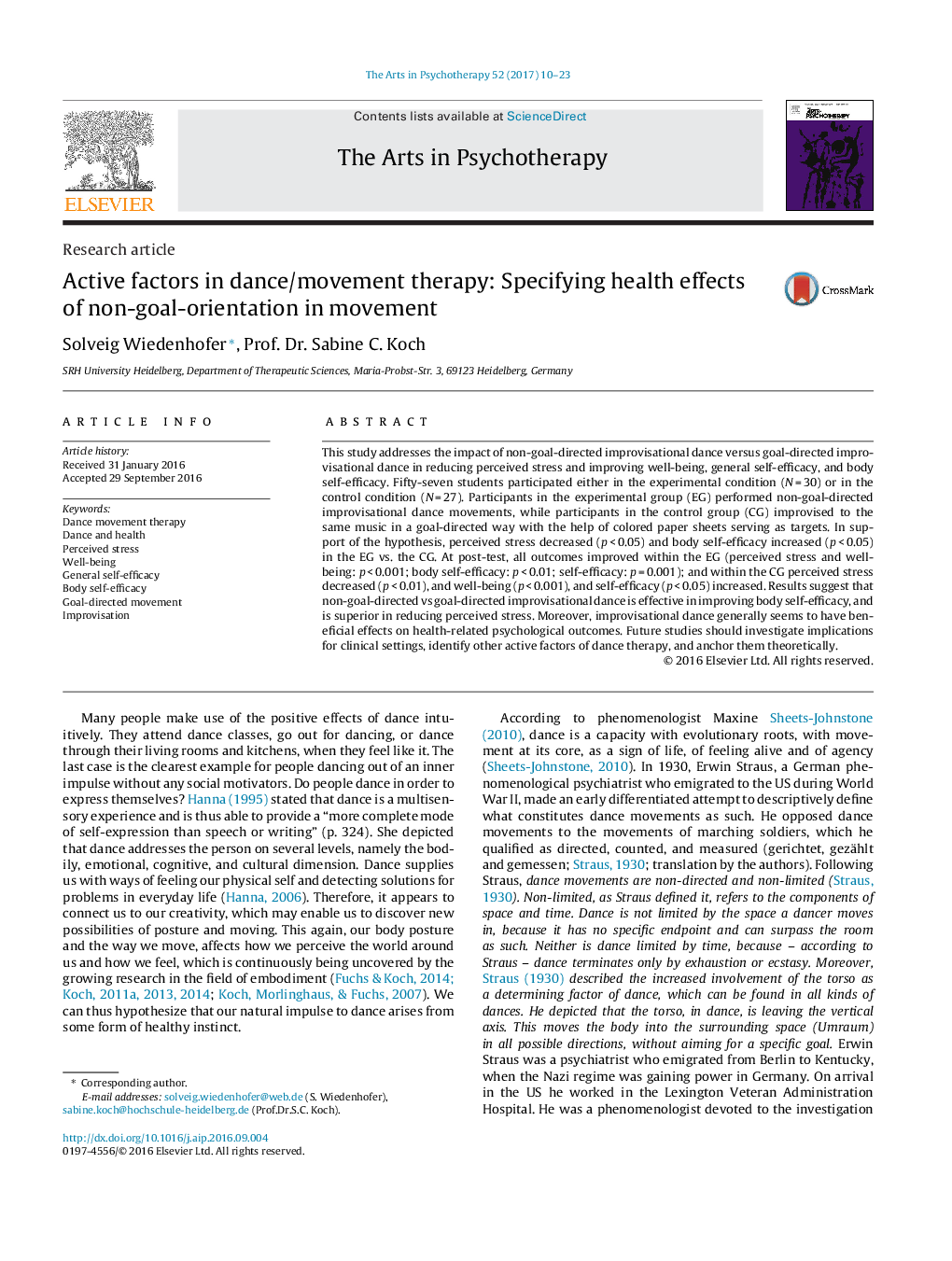| Article ID | Journal | Published Year | Pages | File Type |
|---|---|---|---|---|
| 4935740 | The Arts in Psychotherapy | 2017 | 14 Pages |
Abstract
This study addresses the impact of non-goal-directed improvisational dance versus goal-directed improvisational dance in reducing perceived stress and improving well-being, general self-efficacy, and body self-efficacy. Fifty-seven students participated either in the experimental condition (N = 30) or in the control condition (N = 27). Participants in the experimental group (EG) performed non-goal-directed improvisational dance movements, while participants in the control group (CG) improvised to the same music in a goal-directed way with the help of colored paper sheets serving as targets. In support of the hypothesis, perceived stress decreased (p < 0.05) and body self-efficacy increased (p < 0.05) in the EG vs. the CG. At post-test, all outcomes improved within the EG (perceived stress and well-being: p < 0.001; body self-efficacy: p < 0.01; self-efficacy: p = 0.001); and within the CG perceived stress decreased (p < 0.01), and well-being (p < 0.001), and self-efficacy (p < 0.05) increased. Results suggest that non-goal-directed vs goal-directed improvisational dance is effective in improving body self-efficacy, and is superior in reducing perceived stress. Moreover, improvisational dance generally seems to have beneficial effects on health-related psychological outcomes. Future studies should investigate implications for clinical settings, identify other active factors of dance therapy, and anchor them theoretically.
Keywords
Related Topics
Health Sciences
Medicine and Dentistry
Psychiatry and Mental Health
Authors
Solveig Wiedenhofer, Prof. Dr. Sabine C. Koch,
